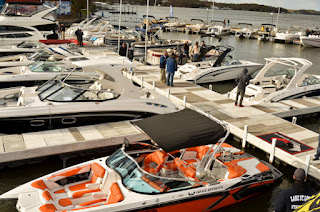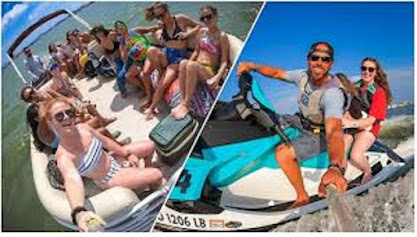How to stay put in the water or Anchoring just weigh it
- Mushroom Permanent Anchors. ...
- Auger Permanent Anchors. ...
- High Holding Permanent Anchors. ...
- Deadweight Permanent Anchors. ...
- Northill Temporary Anchor. ...
- Grapnel Temporary Anchor.
- Danforth Anchor
Setting the Anchor

To ensure that an anchor "sets" well, apply tension to the rode so the anchor penetrates the bottom. Do this by making fast the line and applying power in reverse. If your boat moves, reset the anchor and try again.
Many boaters make only a half-hearted attempt to set the anchor by putting the boat in reverse for just a few seconds. To be sure the anchor is set you must put a reasonable strain on the rode for a reasonable length of time. Your boat should surge forward when you back off the power, indicating that you have put some strain on the rode to test the anchor set. We know of no way to ensure that your anchor will hold other than by pulling on it hard.
How much anchor chain and line do I need?
Scope

Scope is defined as a ratio of the length of an anchor rode from the bit to the anchor shackle and the depth of the water under the the bow of the boat measured from deck height. Most anchoring texts and anchor manufacturers agree that a scope of 7:1 achieves the anchor's designed holding power, and more scope is better than less. In theory, 7:1 scope is great, but at a crowded anchorage most cruisers scoff at the idea of paying out more than 3:1 or 4:1; there just isn't that much space for boats to swing. When an anchor is securely set you can consider shortening scope in a crowded anchorage.
So if you have 20ft of water 7 feet of anchor chain and rope per foot is needed. or a total of 140 feet.
Once an anchor has been set, it will almost always hold the same amount of tension that was used to set it, even if the scope is reduced. This means that you can pay out long scope, pull hard on the anchor rode using the engine and then shorten scope to reduce swinging room. However, if your boat swings and the anchor has to reset itself, it will have to do so at a reduced scope. This is known as Anchoring Russian Roulette.
To Un-anchor a Boat
Now it time to leave you are done fishing or just finished lunch, now is the time to weigh anchor. The phrase "anchors aweigh" is a report that the anchors are clear of the sea bottom and, therefore, the ship is officially under way.
The best way is to bring the Boat to the Anchor
Move the boat towards the anchor at a very slow speed (at a slow idle). Loosely wrap one turn of the line once around the base of a cleat near the bow of the boat. Pull the excess line as the boat gets closer to the anchor.



Comments
Post a Comment